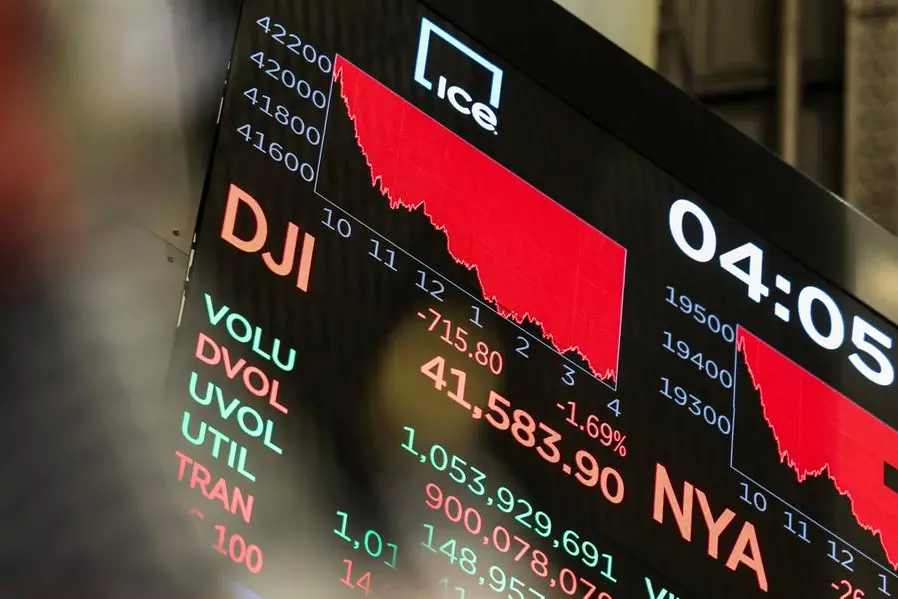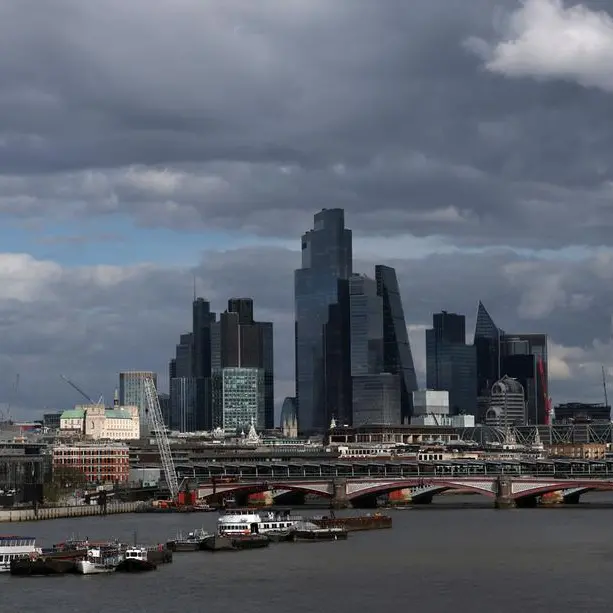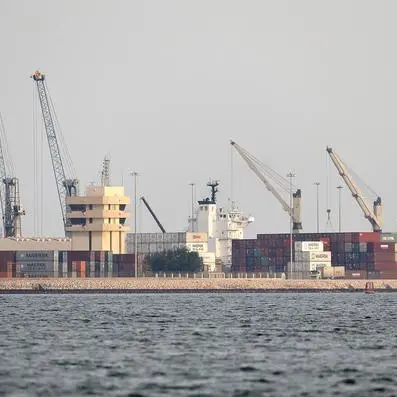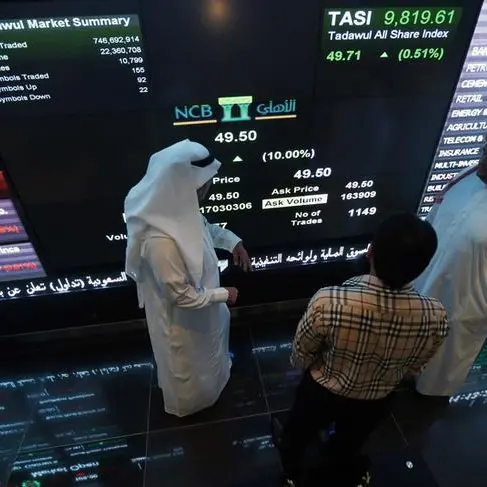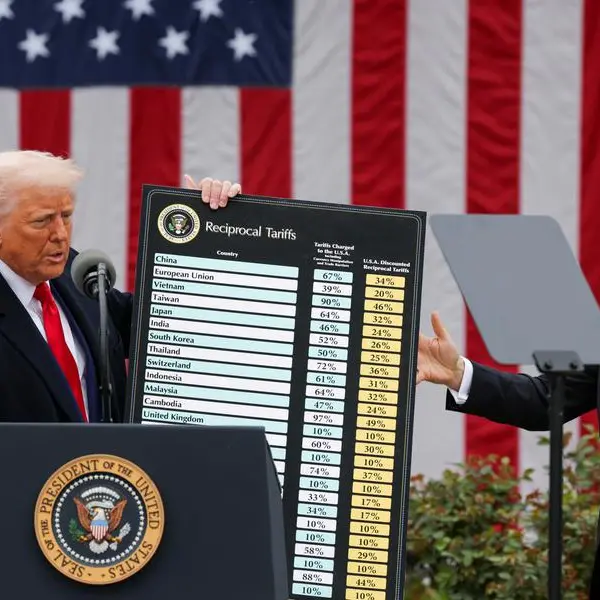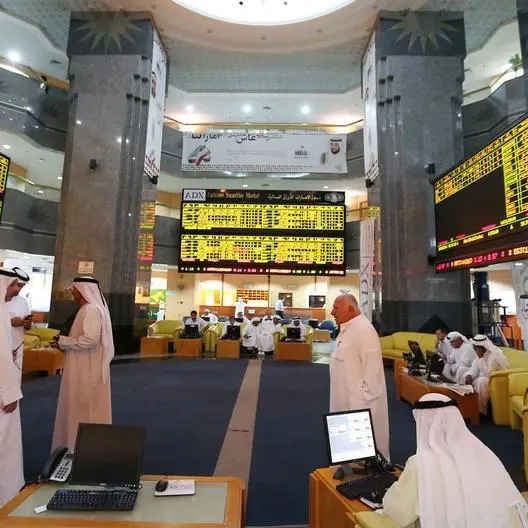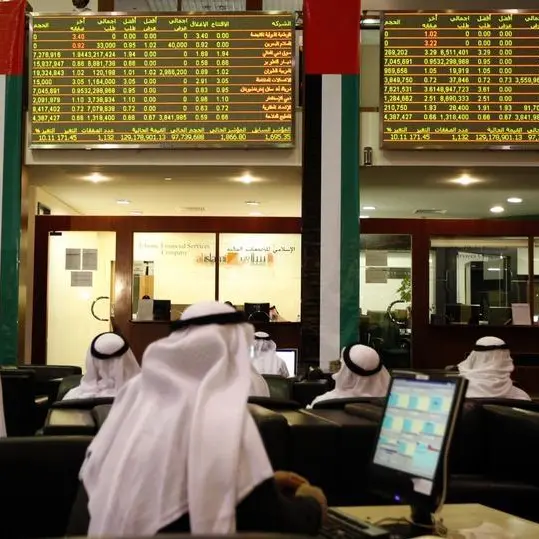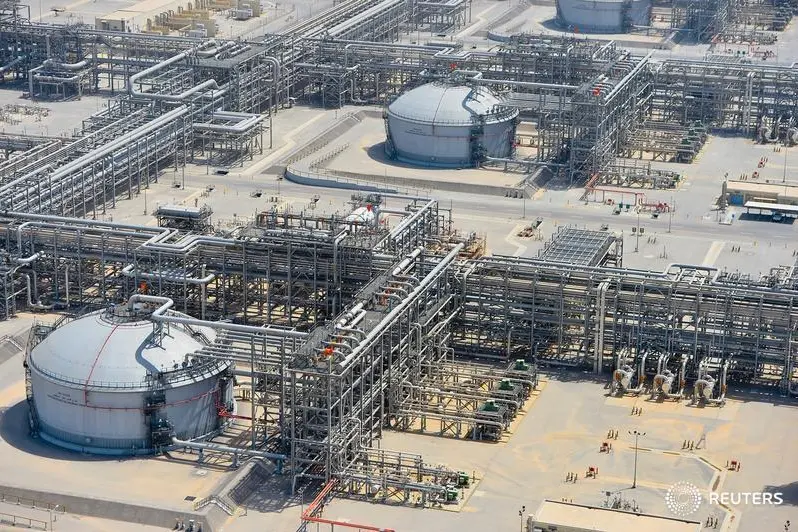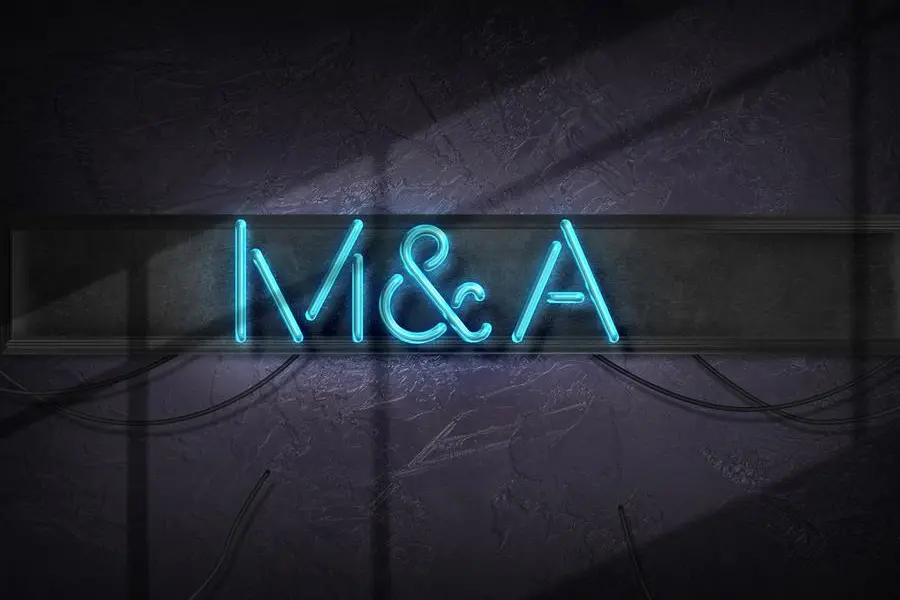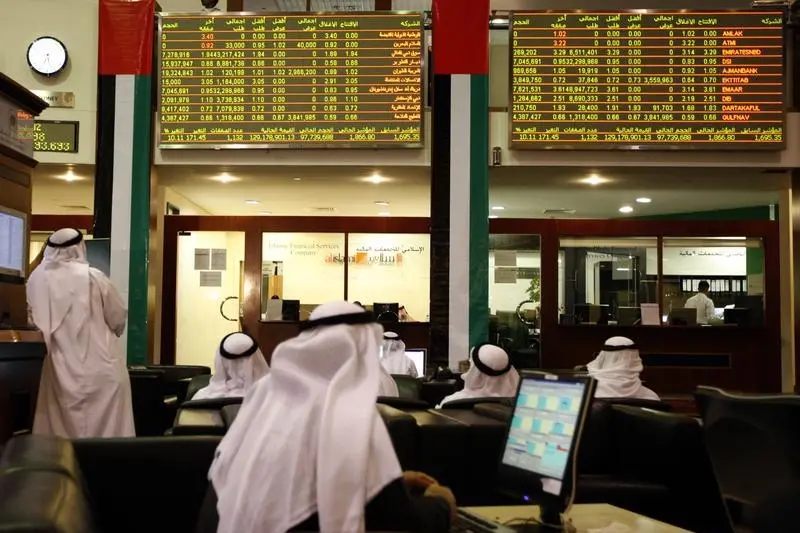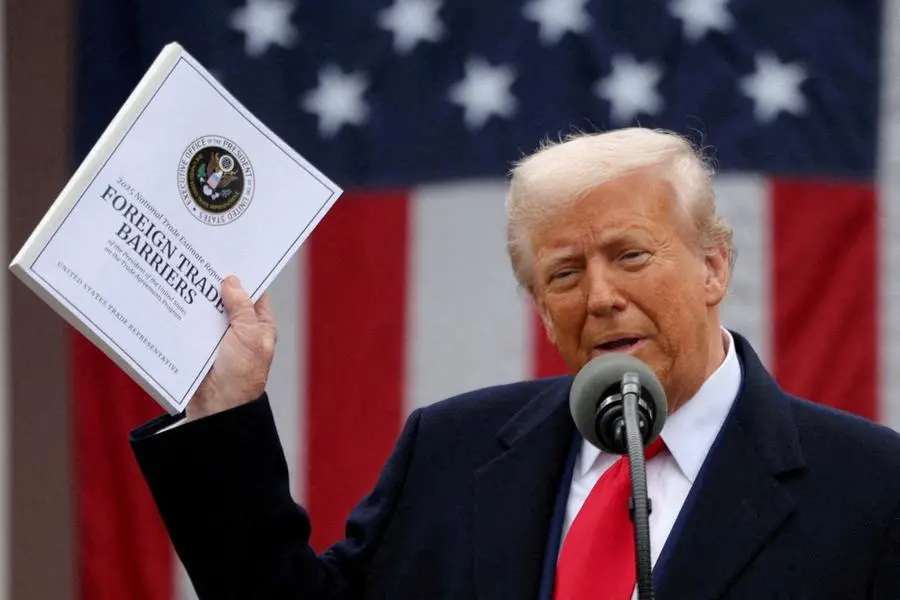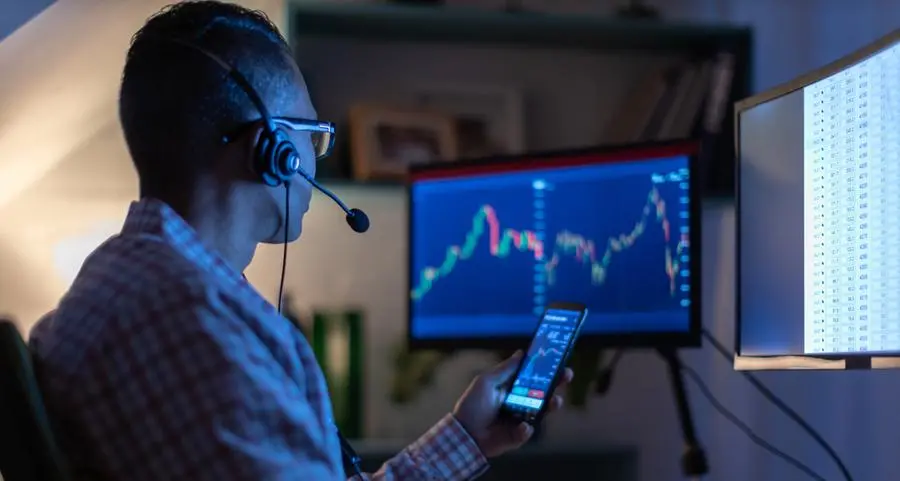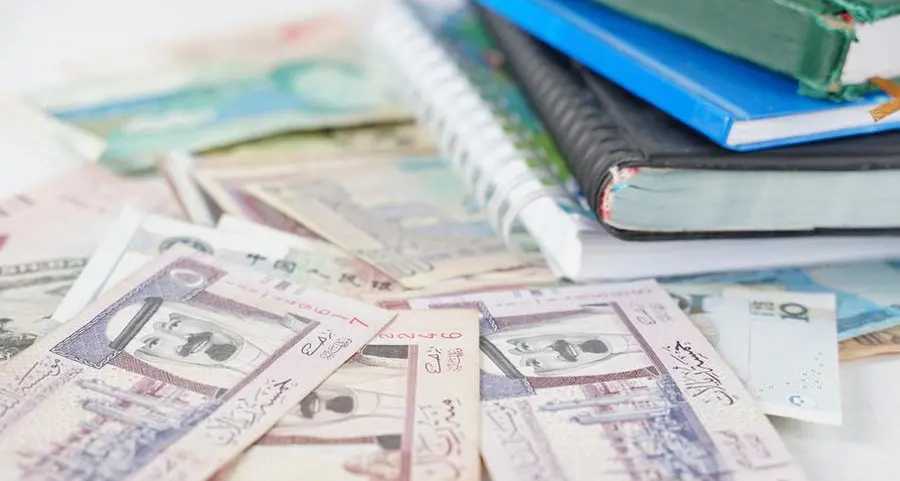PHOTO
A screen displays the Dow Jones Industrial Average after the closing bell on the floor at the New York Stock Exchange (NYSE) in New York City, U.S., March 28, 2025. REUTERS/Jeenah Moon.
Global stocks tumbled for a second day on Friday after U.S. President Donald Trump's sweeping tariff plans wiped $2.4 trillion off Wall Street equities, with the sell-off deepening after China said it would impose additional tariffs of 34% on all U.S. goods.
Banking stocks cratered as investors fretted about growth and priced in far more central bank rate cuts, with benchmark 10-year U.S. Treasury yields sliding to their lowest since October, after Trump slapped a 10% tariff on most U.S. imports and much higher levies on dozens of countries.
"If the current slate of tariffs holds, a Q2 or Q3 recession is very possible, as is a bear market," said David Bahnsen, chief investment officer at The Bahnsen Group.
"The question is, does President Trump seek some sort of off-ramp for these policies if and when we see a bear market in the stock market."
Europe's STOXX 600 dropped 3.1% after sliding on Thursday, putting the index on track for its biggest weekly fall since February 2022 at 6.6%. Japan's Nikkei 225 slumped 2.8% overnight for a second session running.
Futures for the U.S. S&P 500 fell 1.6% after the cash index plunged 4.8% on Thursday - the biggest one-day fall since the COVID-19 crisis in 2020.
Nasdaq futures were down 1.7% after the index dropped 5.4% on Thursday. The VIX index, a closely watched measure of expected volatility in U.S. stocks, climbed to the highest since August at 33.
BANKS SLIDE AS RATE CUT BETS RISE
Traders on Friday were pricing in more than 100 basis points of Federal Reserve rate cuts this year, up from around 75 basis points on Wednesday, and increased their bets on Bank of England and European Central Bank reductions too.
The risk of a U.S. and global recession this year has risen to 60% from 40% earlier after Trump's tariff announcements, J.P. Morgan said.
Lower interest rates - which dent lenders' margins - and worries about growth battered banking stocks, with the STOXX 600 banking index slumping 8.7%.
HSBC shares dropped 6.9%, UBS fell 5.5% and BNP Paribas slid 8%.
That followed an 8% rout for Japanese banks overnight and a sharp sell-off of Wall Street lenders on Thursday. Citigroup dropped more than 12%, Bank of America sank 11% and a host of other major lenders suffered similar falls.
"If we start seeing negotiations taking place, or, Trump dialling back on some of these tariffs, that is the only possible route to allow for an abatement of the sell-off," said Aneeka Gupta, equity strategist and economist at WisdomTree.
"But for now that seems very unlikely."
As investors continued to hunt for safety, 10-year U.S. government bond, or Treasury, yields dropped 16 basis points to 3.897%, after falling 14 basis points on Thursday. Yields move inversely to prices.
The most obvious sign of nerves about the health of the U.S. economy and markets was a 1.9% drop in the dollar index on Thursday, the biggest fall since November 2022.
The dollar found a footing on Friday, however, with the euro down 0.5% after rallying 1.9% on Thursday.
The Swiss franc, another safe haven, perked up about 0.5% while the Australian dollar - sometimes seen as a barometer of investors' risk appetite - plunged 2.2%.
"The thing that might help markets a little bit is that we get data that suggests that, actually, we are going to get 1%-plus growth in the U.S. in the last quarter," said Michael Metcalfe, head of macro strategy at State Street Global Markets.
Metcalfe pointed to U.S. nonfarm payrolls data, due at 1230 GMT (8.30 a.m. ET), as one key data point. The figures are expected to show the U.S. economy added 135,000 jobs in March, down from 151,000 in February.
Japanese 10-year government bond yields were set for their biggest weekly fall - at 37 basis points - since 1992 and last traded at 1.175%.
Oil prices also dropped on worries about growth and demand , with Brent crude futures down 2.9% to $68.10 a barrel.
(Reporting by Harry Robertson in London and Rae Wee in Singapore; Editing by Sam Holmes, Sharon Singleton and Hugh Lawson)
